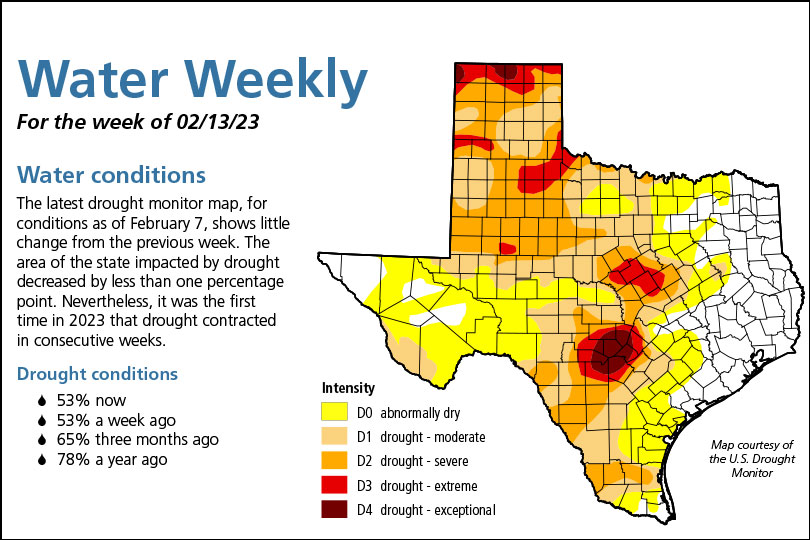By Shelby Shank
Field Editor
Drought conditions have continued for much of the Lone Star State at the beginning of 2023.
January was a dry month for most of the state with drought conditions intensifying in Central and South Texas.
Some rainfall and winter storms brought moisture to Texas in late January and early February, but not enough to break the statewide trend of drier-than-normal conditions.
North and East Texas began to see improvements in drought conditions by the end of January, but more precipitation is needed in the Panhandle, Central and South Texas in order to reduce the area impacted by drought.
Last year’s drought devastated many farmers and ranchers across the state.
Texas began 2022 with 67% of the state in drought, and by the end of July, 97% of Texas was suffering from drought conditions.
The past few years has been a long La Niña weather pattern, bringing drought conditions across the nation.
Tom Bradshaw with the National Weather Service predicts Texans will begin seeing El Niño weather patterns soon.
“We are in a weak La Niña pattern right now and transitioning into a neutral state around March and April,” Bradshaw said in an interview with the Texas Farm Bureau Radio Network. “It gives us some hope that long term drought conditions we saw the last two to three years across the state will get mitigated and begin to see more springtime rains transitioning into the summer.”
The La Niña climate pattern influences tornadic activity, hurricane season and increases the chance of drought in some regions.
El Niño acts the opposite with better chances of rain throughout the Southwest and Plains. The Climate Prediction Center says there is less than a 40% chance the weather pattern will arrive between June and August.
The Texas Water Development Board’s Water Weekly report shows little change in drought from the previous week.
For the full Water Weekly report, click here.
For additional resources on drought, visit twdb.texas.gov/drought/index.asp.

